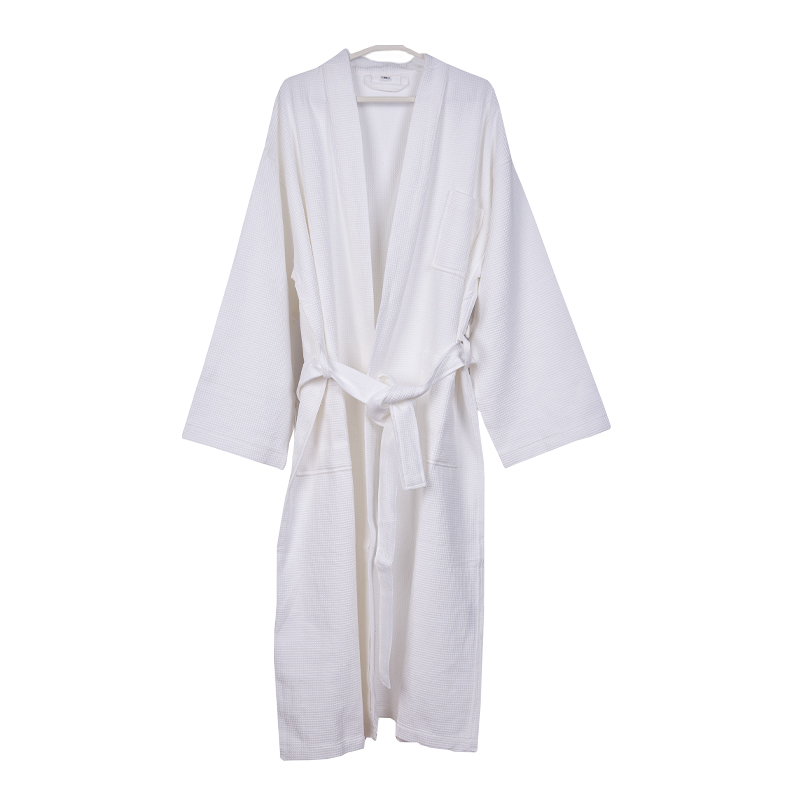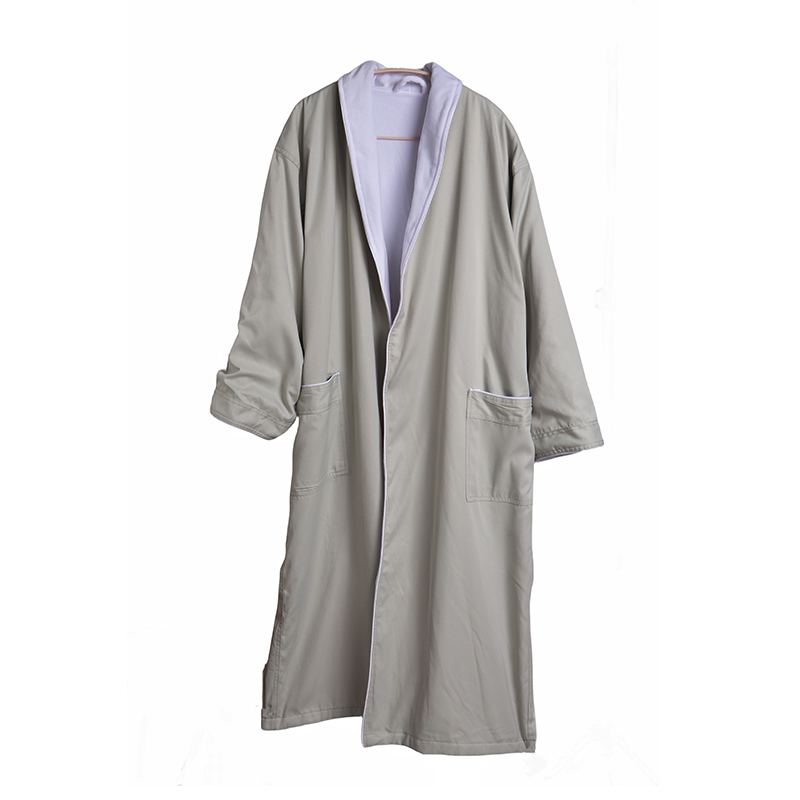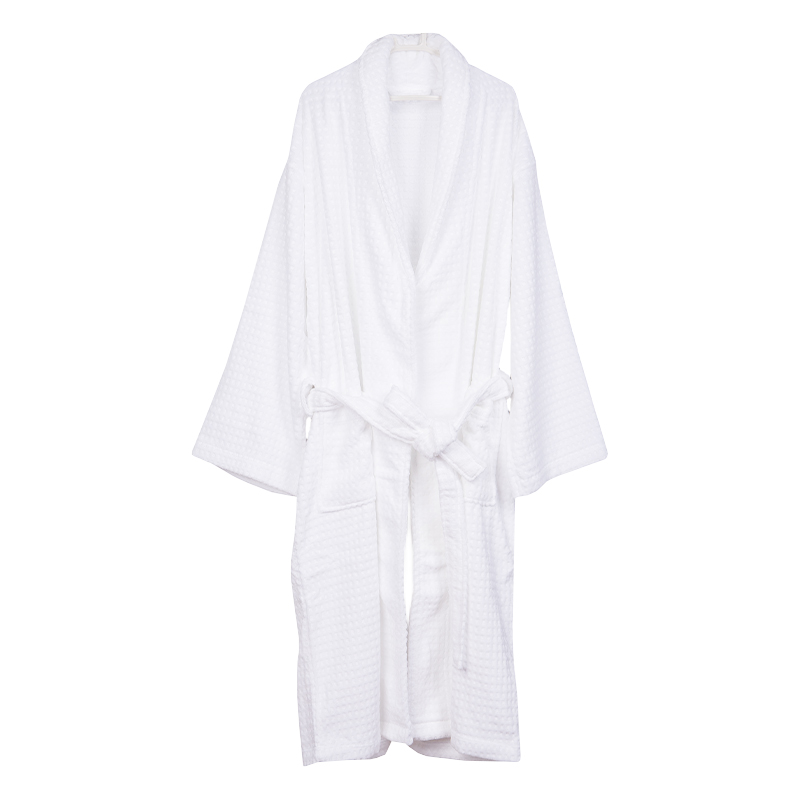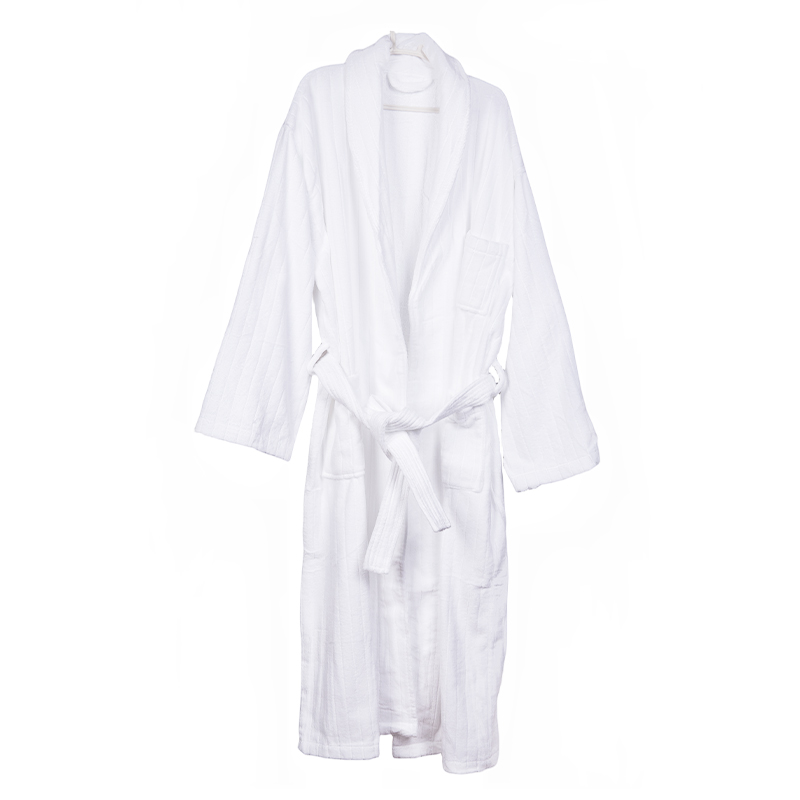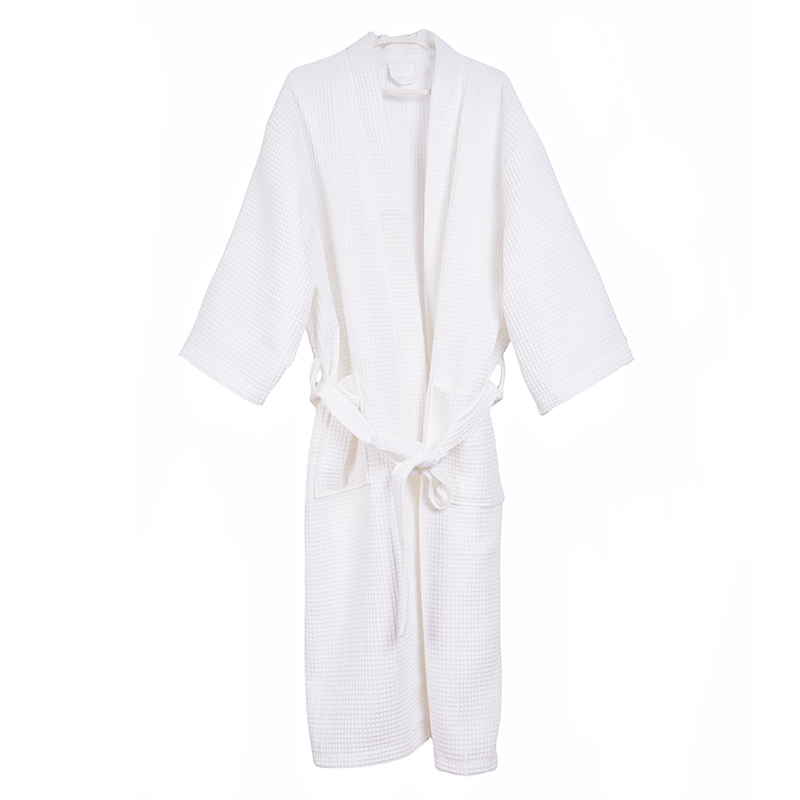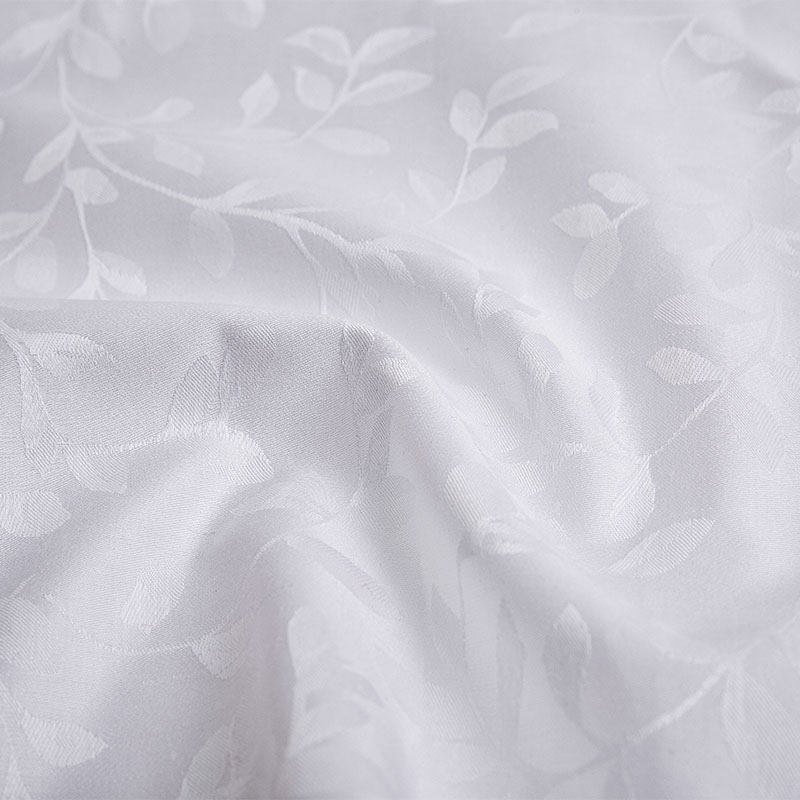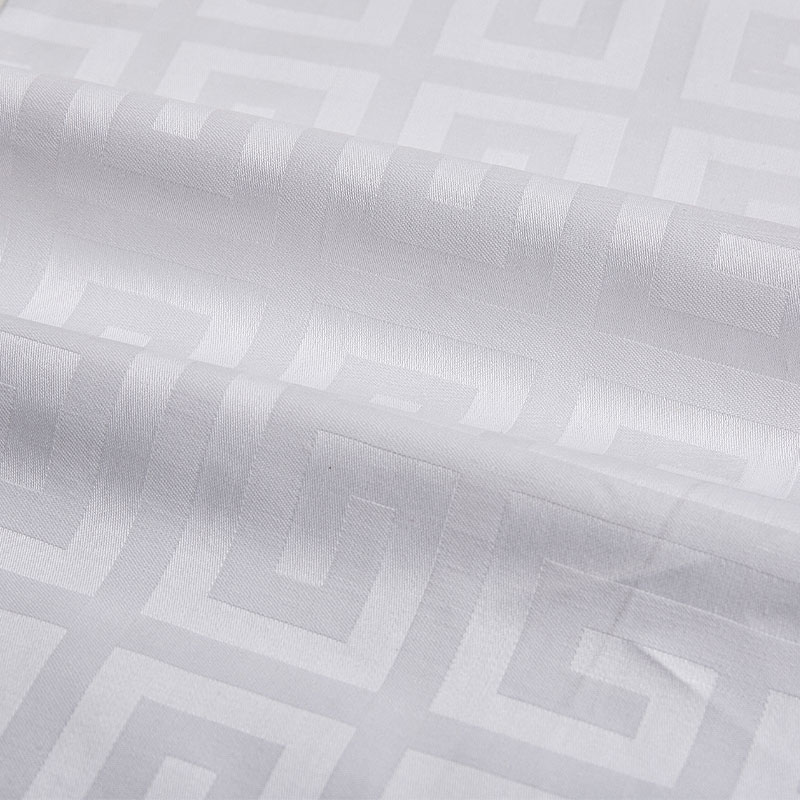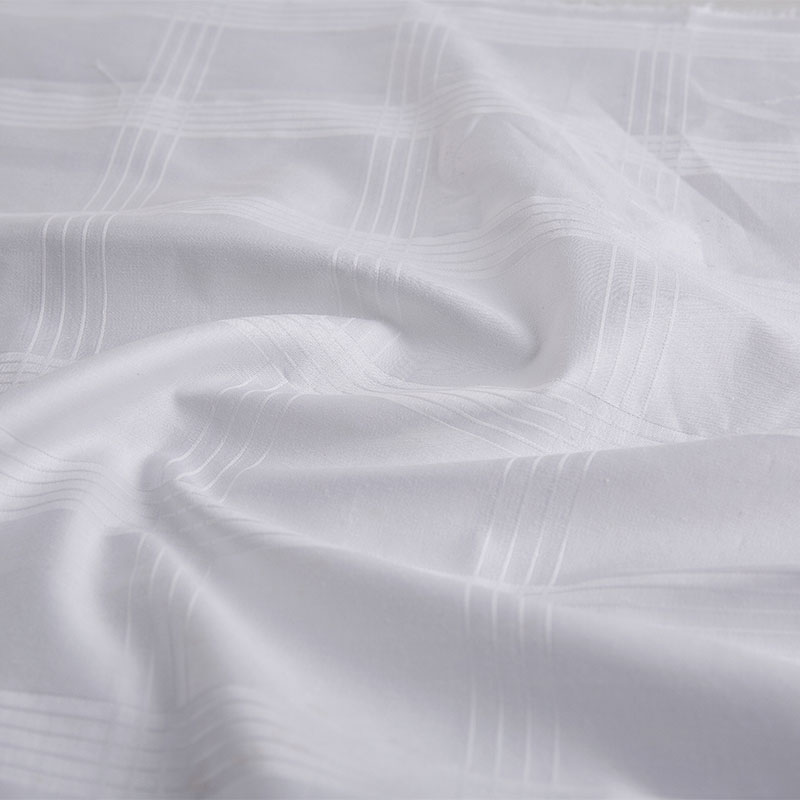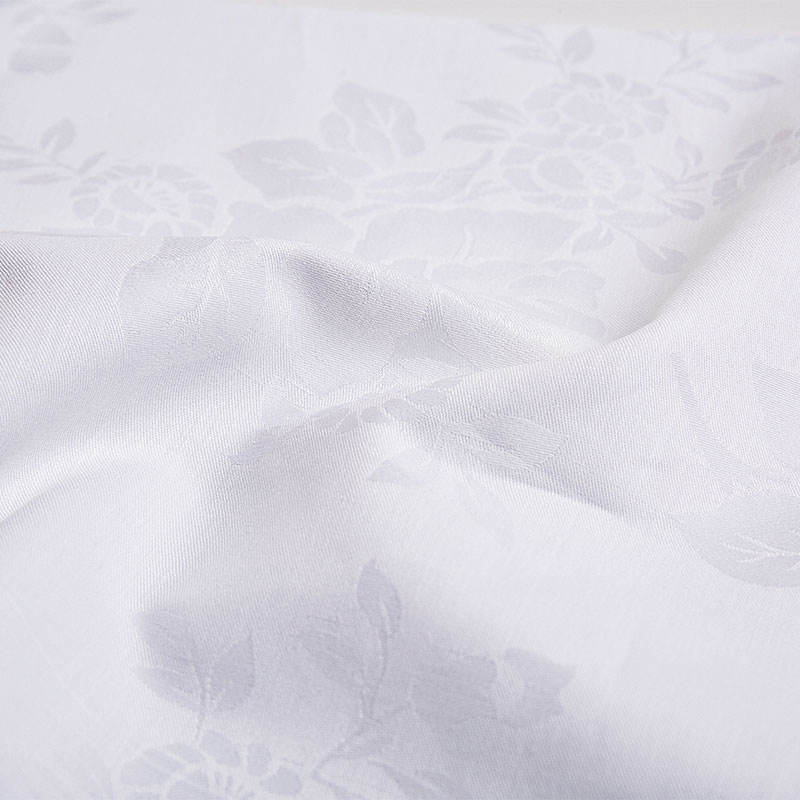Content
Why have pure cotton bathrobes become standard equipment in high-end hotels?
- Comfort: Pure cotton wins, skin-friendly and non-irritating
Pure cotton: natural fiber, soft and breathable, suitable for sensitive skin, and not stuffy when worn for a long time.
Coral fleece/microfiber: chemical fiber material, easy to generate static electricity, some people will feel itchy when wearing it.
Bamboo fiber: although soft, it is easy to deform, and the comfort level decreases after multiple washings.
Reasons for hotel selection: high-end customers pay special attention to skin-friendly feeling, and the natural properties of pure cotton can best meet the picky needs.
- Water absorption: Pure cotton absorbs moisture quickly, but is slightly inferior to microfiber
Pure cotton: good water absorption, but medium drying speed (the hotel needs to be equipped with drying equipment).
Microfiber: the fastest water absorption speed, but the touch is cool, suitable for gyms rather than guest rooms.
Coral fleece: hydrophobic surface, the worst water absorption capacity, easy to leave water stains
Reasons for hotel selection: Guests need to quickly absorb moisture after bathing, and the balanced performance of pure cotton is more in line with the needs of the scene.
- Durability: High-count cotton bathrobes can be machine washed 100+ times without deformation
Pure cotton: High-quality long-staple cotton (such as Egyptian cotton) bathrobes become softer and softer with each wash, and the lifespan is up to 3-5 years.
Bamboo fiber/microfiber: easy to pilling and harden, and the texture is greatly reduced after frequent washing.
Hotel insider: In order to control costs, the hotel will choose high-density pure cotton above 80 counts, which not only ensures softness but also washability.
- Environmental protection: Pure cotton is naturally degradable, in line with the ESG trend of high-end hotels
Pure cotton: It can be naturally decomposed, without microplastic pollution, and cotton certified by OEKO-TEX® is safer.
Chemical fiber material: The raw materials come from petroleum, the production is highly polluting, and recycling is difficult.
Industry trend: Hotels such as Ritz-Carlton and Four Seasons have gradually eliminated chemical fiber bathrobes and turned to organic cotton.
Limitations of other materials
Coral fleece: Suitable for winter homes, but easy to harbor bacteria, rarely used by hotels.
Microfiber: Mostly used in SPA clubs, because it feels cheap and does not meet the high-end positioning.
Bamboo fiber: Promoted as "antibacterial" but the actual effect is limited, and the price is inflated.
Why do high-end hotels insist on using pure cotton?
Brand tone: Pure cotton conveys a natural and high-end texture, which matches the hotel's image.
Guest expectations: Guests subconsciously believe that "high-end bathrobes = pure cotton", and other materials will reduce satisfaction.
Long-term cost: Although the price of a single piece is high, the durability reduces the frequency of replacement.
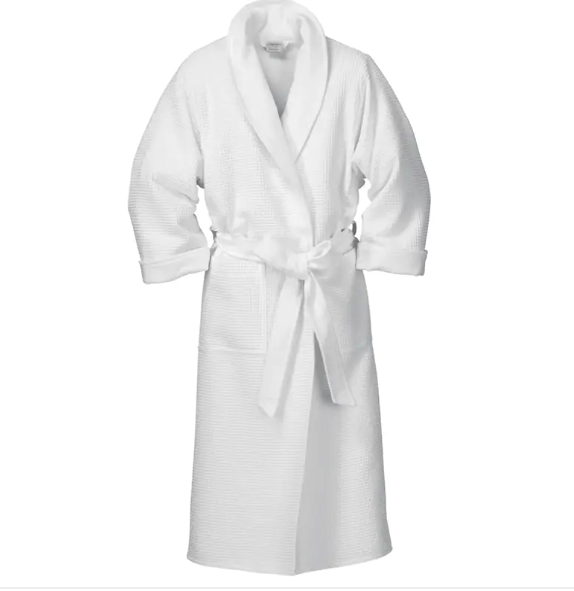
Cleaning and maintenance tips for pure cotton bathrobes
Daily cleaning steps (for hotels and homes)
- Pre-treat stains
When the bathrobe is stained with makeup or oil, first use a neutral detergent or oxygen bleach (non-chlorine bleach) to gently rub the area, let it sit for 5 minutes, and then machine wash.
Avoid rubbing hard to prevent the cotton fibers from breaking.
- Machine wash settings
|
Parameters |
Recommended value |
Reason |
|
Water temperature |
30°C-40°C (warm water) |
High temperature can easily cause shrinkage and hardening |
|
Speed |
600-800 rpm |
High speed can easily cause fibers to tangle |
|
Mode |
Gentle/cotton and linen program |
Reduce friction damage |
Detergent selection:
Neutral PH value laundry detergent (such as wool detergent)
Add a small amount of white vinegar (50ml) to soften the water and prevent scale deposition
- Drying tips
Lay flat to dry: avoid hanging to cause deformation (hotels often use dryers, but it is recommended to dry in the shade for home use)
Avoid exposure to the sun: ultraviolet rays will make cotton fibers brittle and cause yellowing
Deep care (once a month)
- Restore softness
Add 1/4 cup of baking soda + 1 cup of white vinegar when washing in the machine (to neutralize residual alkali)
Or use fabric softener (a small amount to avoid clogging fiber pores)
- Sterilization and deodorization
Machine wash at 60°C + oxygen effervescent tablets (common method in hotels)
Stubborn odors can be soaked in lemon juice + warm water for 30 minutes
- Ironing suggestions
Steam ironing at medium and low temperatures (cotton is resistant to high temperatures but high temperatures can easily cause the gloss to disappear)
Iron the inside, avoid direct contact with the outer layer of the bathrobe
- Absolute taboos
Bleach: Chlorine bleach will corrode cotton fibers, causing them to turn yellow and brittle (strictly prohibited in hotels)
Strong cleaning powder: Contains abrasives, which will wear the fiber surface
High temperature in the dryer: Commercial drying requires low temperature mode (natural drying is recommended for home use)
- Hotel-level maintenance standards
Classification washing: wash white bathrobes separately to avoid color mixing
Put in laundry bags: reduce friction with other items
Regular elimination: even if there is no damage, the hotel replaces a batch every 1.5-2 years (home use can be extended to 3-5 years).
Cotton Bathrobes FAQ
- Q1: Will a pure cotton bathrobe shrink? How to avoid it?
It may shrink, but it is controllable:
Use cold water (below 30°C) + gentle mode for the first wash to reduce the chance of shrinkage by 50%.
Choose a pre-shrunk bathrobe (a common process in high-end hotels).
- Q2: Why does the bathrobe become hard after a few washes?
Causes and solutions:
Water quality problem: It is recommended to add white vinegar (50ml) or water softener for washing in hard water areas.
Detergent residue: Use neutral laundry detergent instead and rinse thoroughly.
Over-drying: Natural drying is better, and commercial drying requires low temperature mode.
- Q3: Can pure cotton bathrobes be bleached?
Chlorine bleaching is strictly prohibited: it will corrode the fiber and cause it to turn yellow and brittle.
Alternatives:
Oxygen bleach (sodium percarbonate)
Soak in lemon juice + baking soda to remove yellowing
- Q4: How to deal with blood stains/cosmetic stains on bathrobes?
Emergency treatment steps:
Immediately rinse the back of the stain with cold water (hot water will solidify the protein)
Apply enzyme laundry detergent and let sit for 10 minutes
Machine wash at water temperature below 40°C

 EN
EN English
English русский
русский Español
Español عربى
عربى
 Online Message
Online Message


